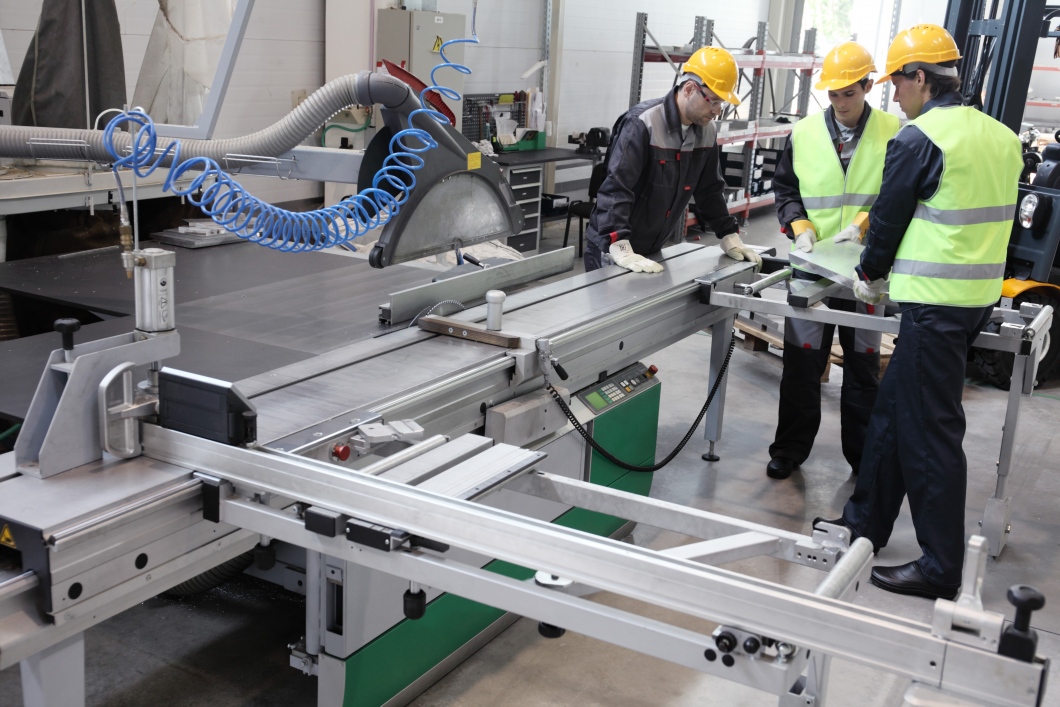When it comes to rotating equipment, many manufacturers take the approach of waiting until something breaks before making any repairs. When this happens, not only do you experience increased downtime, but you’ll also pay higher maintenance costs. Below are critical areas on your rotating equipment that should be checked regularly for potential maintenance issues.
Bearings
The bearings of your machines are responsible for taking most if not all the weight of what you’re working with. They make it much easier for the moving parts of your machinery to move and rotate. These critical components of your equipment drive shafts, idlers, and sprockets require regular lubrication. If these bearings are not properly lubricated and maintained, they will wear out more quickly and cause more downtime.
Belt Tensioning
Tensioning your belts is a necessary part of ensuring the proper functioning of your equipment. It’s essential to use high-quality tools to ensure a snug fit between the belt and the pulley, which minimizes the risk of belt failure. Too tight and you risk excessive tension on other parts of your equipment such as the shafts, bearings, and the belt itself. Too little and there’s a chance the belt could slip or wear out faster.
Industrial washers
Unlike residential washers, industrial washers use a friction system to move heavy loads. Because of this, they need regular replacement due to wear and tear. Over time, they will become hard and brittle, which can cause damage to your machine. A good practice is to keep an eye out and regularly check over your equipment for signs of broken, breaking, or damaged components. Even the smallest of items have the potential to wreak havoc on your production line if you allow them to go untreated for too long.
CAMs
CAMs are a computer program within your manufacturing equipment that handles the automated processes of the machine. CAMs (short for Computer-Aided Manufacturing) handle the actual process of getting the job done, from the planning for what to do to the control of the operations. This allows for greater speed and better accuracy of the product in a manufacturing setting. Thanks to a computer handling the actual making of the product, whether that be cutting, shaping, drawing, or however else it’s made, the product is able to come out looking identical to the products that came before and after. The chance for human error, and thus the human tendency to make things look similar but not the same is eliminated.
Pulleys
These often overlooked components are essential workhorses for your equipment. A pulley system is used to make the weight you’re carrying lighter since the pulley system is taking on most of the heavy lifting. Pulleys typically consist of a rope, or any sort of chord designed to hold weight, and oval wheels that the rope is threaded between. Together, these components are able to pick up and hold heavy objects that you otherwise wouldn’t have been able to.
To ensure they last as long as possible, they should be cleaned regularly, lubricated with high-quality oil, and inspected for signs of wear and tear. The rope snapping on you could be disastrous, especially if there’s a chance that a pulley system could be holding dangerously heavy loads.
Motors
Many industrial machines require powerful and reliable motors to function properly. Because of this, it’s important to check these parts before starting up your equipment to make sure that they’re in good working order and free from damage or wear.
Guides
These components are designed to take the stress off of your main shafts. Over time, they will deteriorate, which can cause severe damage to your machine. Maintenance includes cleaning, greasing, and inspection of the guides.
Sprockets
Sprockets are rather similar to pulleys in their design since both consist of a wheel and connecting rope or chain. For the sprocket, it’s a chain that can catch on the notches along the outside of the sprocket’s wheel. Another common area to find a sprocket is as part of a bike chain, and much like on a bike chain the sprocket helps keep your machine moving during production. Maintaining your sprockets includes cleaning, greasing, and inspecting them regularly.
Drive Belts
These belts transfer power from one part of your equipment to another. This requires them to have a good amount of tension to run smoothly. Over time, these belts will lose their tension which can cause damage to your equipment and create more downtime for you. To prevent these problems, it’s essential to check and adjust your belts regularly and ensure that they are running at an optimal speed.
Ratchet mechanisms
All machinery uses these types of mechanisms, which are responsible for pulling your wheels over the rails or rolling pin over the dies when they’re in action. They don’t require very much maintenance, but they must be adequately greased, inspected, and cleaned regularly.
In conclusion, if you’re experiencing a setback with your machinery, it may be because of a simple maintenance issue. As long as you’re following best practices for your rotating equipment, you can prevent most problems from occurring before their time and ensure that your equipment runs smoothly and minimizes downtime. Checking over your machines regularly is a great way to catch worn-out components before they become a problem, and a chance to identify broken or breaking parts before they have a chance to inflict damage to the rest of your equipment. Overall, keeping a close and thoughtful eye on your manufacturing equipment is the best way to keep it running for as long as possible.

